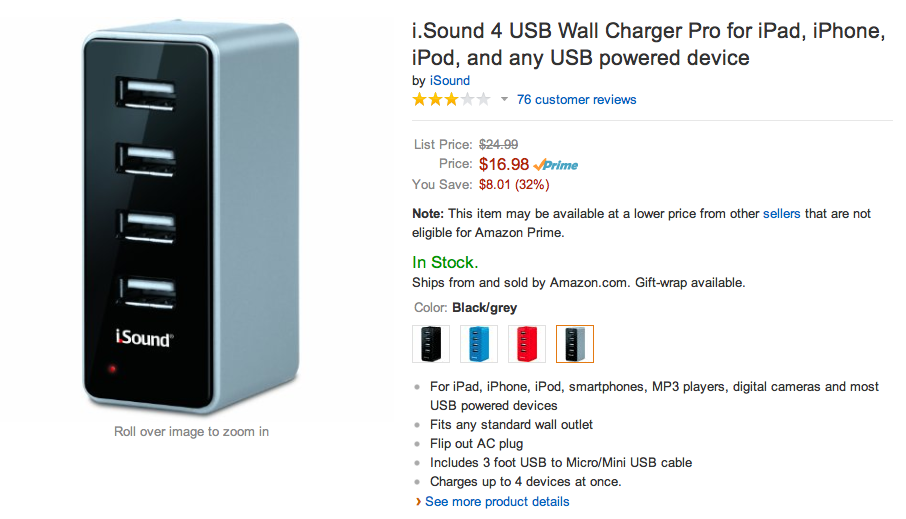Credit for this page belongs with Eric Behrens and David Neal of Swarthmore College. All errors, of course, are mine.
iPods are the core of the mobile lab for two reasons: 1) they are small, portable, and relatively inexpensive; and 2) the best educational apps are still (as of 2013-4) mostly limited to i-devices. If apps as sophisticated as iMovie and GarageBand were available on Android devices, it would probably make sense to use those devices as the core of the lab, both because Android prices remain lower than Apple, and because, given that price differential, more people in Morocco (and presumably Africa and the Middle East more generally) own or are familiar with Android platforms. (See software page for more detail on desired functionality for storytelling apps.)
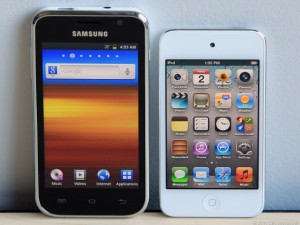
In an ideal Apple-dominated world, I would have purchased 12 copies of the refurbished 8-gigabyte iPod 4, but I ran into several problems here. First, Apple will not sell more than nine (9) of the same item to a single purchaser if that person is taking the units outside of the United States. ( I tried to purchase 12 units both under an educational umbrella and under a small business umbrella, with no joy.) Second, due to a lost or unsent email, I only received clear confirmation of the Fulbright award two weeks before leaving for Morocco. Add in several days of telephone negotiations, and I had to purchase what was available and could be shipped to me before my departure. This happened to be 9 x 16-gigabyte iPods (black) and 3 x 8-gigabyte iPods (white). So far, 8 gigabytes offer plenty of space for my needs.
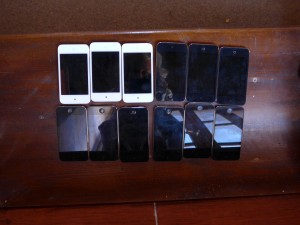
Why 12 units? I planned to limit workshops to ten participants , and I thought I might lose one or two units along the way. In fact, the first workshop ended up having 13 participants, so I was grateful to have my personal iPod along to add to the mix. (I could have used another three for co-facilitators and local partners!)

 Refurbished iPods are significantly cheaper than new; they carry a one-year warranty, which covers the term of my project (though I hope they’ll last longer than that). Still, they’re not inexpensive. ($1728)
Refurbished iPods are significantly cheaper than new; they carry a one-year warranty, which covers the term of my project (though I hope they’ll last longer than that). Still, they’re not inexpensive. ($1728)
After purchasing the iPods, fool that I am, I discovered that the camera on an iPod 4 is significantly inferior to the camera on the iPhone 4. That was a serious blow. I had hoped to have participants take photos for their stories on the iPods themselves–I had thought the iPods could be a one-stop media center. I didn’t have the budget to add cameras or switch to iPhones: what could I do? Eric suggested asking the Swarthmore College community for donations. I did, and six generous people, some of whom I had never met, contributed their gear. Keeping different charging systems with the correct camera is a little complicated, and many of these cameras have a little something wrong with them, but they’re all a big advance on the low resolution of the iPod 4 camera.
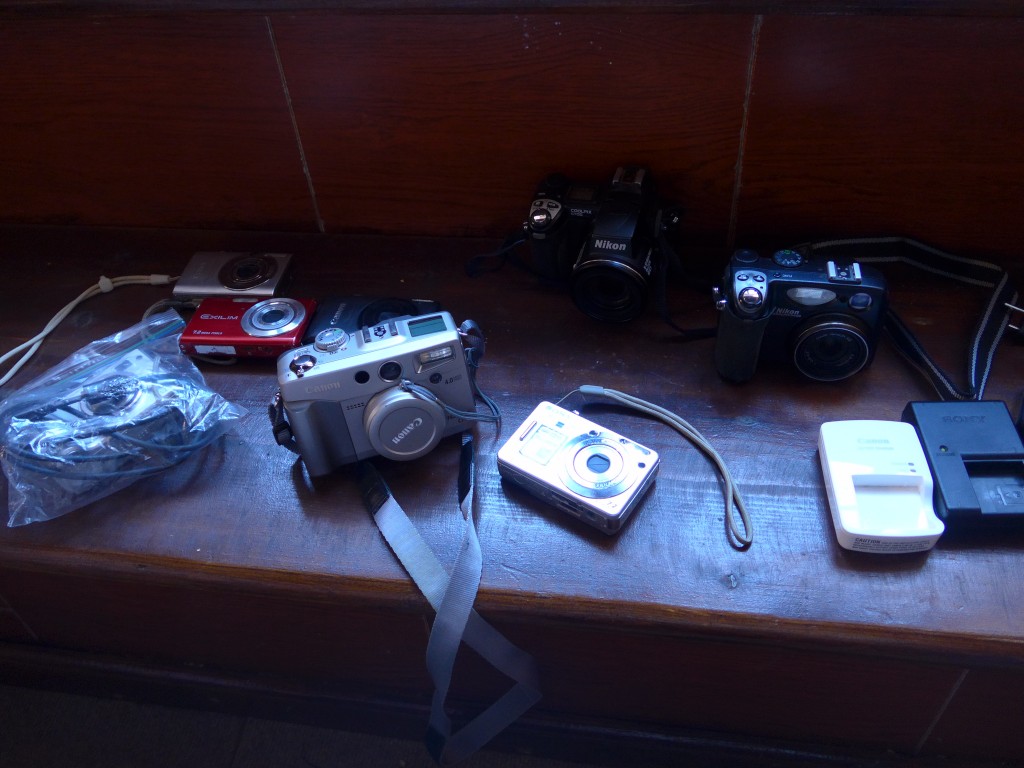
I got two card readers and 3 extra cards to share around among the cameras.


Now I wanted the sound quality to live up to the image quality: the voice-over is really the heart of the story. So I ordered two microphones that slot into the USB port on the iPod, plus a windsock (also known as a dead cat, for reasons the picture makes obvious) to go over the microphone:
I’m not sure I would buy either of these, if I had it to do again. There’s some improvement in sound quality, but it’s not huge, and it’s hard, in the middle of a hectic recording session, to get the microphones to the soft-spoken people who might benefit from using them.
In order to be able to charge the iPods rapidly, I ordered three iSound USB chargers. Reviews note that they only charge two iPads at a time, but I naively thought they would charge four iPods at a time. It turns out their maximum is three at a time: plug in four at once and they beep at you like persistent little baby chicks. I’ve managed to jiggle things around enough that the loss of those last three charging ports hasn’t been a major problem.
But how exactly do you plug in those chargers? I bought two strips of universal outlets, which have been remarkably helpful for life in general. Highly recommended for living abroad, with (ungrounded) French-style plugs.

I’m using my Swarthmore College-owned MacBook Pro laptop to teach with, so Power-Point presentations and sample stories are projected from the laptop through a small Casio projector. Finished stories are projected the same way. I carry a white sheet and duct tape in case I need to cover a wall to use as a screen. ($1129; sheet was a gift; collaborators have covered walls with white paper)
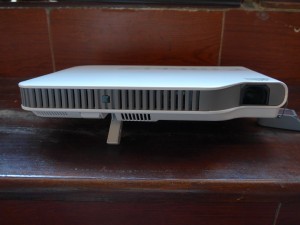
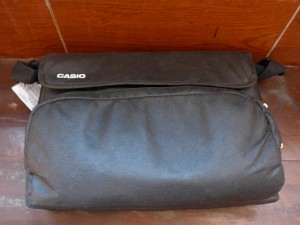

The visual projection has been fine: the volume is a little low. My plan was to use my husband’s Bose Soundlink (cleverly given as a birthday present last year) along with the projector, but the extra bulk is prohibitive when traveling by bus and train. (The new Soundlink speaker looks significantly smaller and cheaper, so it might be a good option for the future for someone with more time to gather materials: money saved on iPods would be well spent here.)
A collaborator tried to share her iSound unit with me, but the volume wasn’t much better than the Canon projector: not worth the (low) cost, in my opinion.

But let’s not forget the cables that let the projection magic work:


A core tenet of the workshop is that participants own their own stories; I wanted everyone to be able to leave the workshop with a copy of their story in hand. The cheapest way to do this (especially in the absence of steady internet access) seemed to be to order small flashdrives to give to participants without easy internet access or personal flash drives. ($328.75 for 75)

If I’d had a bigger budget, I’d have ordered a box and foam to keep the iPods safe from impact, compression, and scratches.


(If I’d had a really big budget, I’d have ordered a box with foam and a built-in charging station, but that runs a couple of thousand dollars even before you start buying iPods.)
Because I had a small budget, my engineer-husband helped me play with low-tech alternatives:
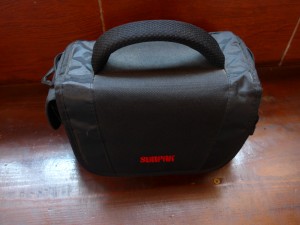
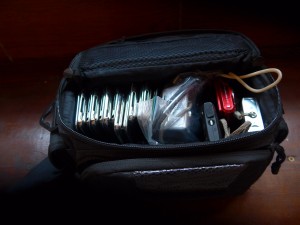 Repurposing my old camera bag had a price tag that was hard to beat; ditto the re-use of left-over packaging.
Repurposing my old camera bag had a price tag that was hard to beat; ditto the re-use of left-over packaging.
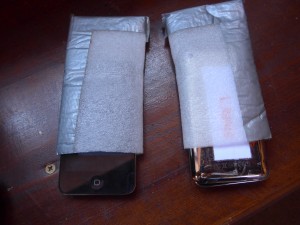
The iPods show some wear, but they’re still useable. And this way, they fit in the bottom of a backpack with the laptop and projector (and my workshop clothes on top), and I’m ready for the road.
So, here’s one version of a final budget, with separate figures for the iPods I bought versus the iPods I’d like to have bought. I’ve left off the things I haven’t found very useful. On the other hand, it’s very difficult to get hardware over here, so if in doubt, bring it with you.
iPods (16g): 9 @ $149 = 1341 (3: 447)
iPods (8g): 3 @ $129 = 387 (9: 1161)
Subtotal 1728 (12: 1608)
Casio slim projector: 1129
Flash drives: 5 @ $4.38 = 328.75
Card readers: 2@12.95= 25.90
SD cards: 3 @ 8.95 = 26.85
iSound chargers:
3 @16.98 = 50.94
Surge protectors with
universal outlets 2@ $25.22 = 50.44
Apple AV Digital adaptor 33.19
HDMI to HDMI cable 5.99
Hardware Total $3379.06/3159.06
(see Software page for app costs)
I had a research allowance of $500 from Fulbright and Swarthmore College generously contributed $2500 on short notice to bring me close to the amount I was spending. Thank you, Marcia Brown, Assistant Provost, and Tom Stephenson, Provost!
And endless thanks to Eric and David, for all your help and (endless) hand-holding with the details of this project!




